During my farm tour, a visitor pointed to a purslane plant and asked me if it was edible. Before I could respond, he was already sampling the leaves.
At the time, I did not know much about edible weeds. Thankfully, it was a Common Purslane, and he was delighted by the taste. However, this encouraged me to do some additional research.
Purslane, Portulaca Oleracea, is an edible plant with smooth, fleshy green leaves and succulent, reddish-green stems which generally grow along the ground. The leaves are flat and slightly rounded. Tiny yellow flowers form at the tip of the branches, under which swollen seed pouches develop.
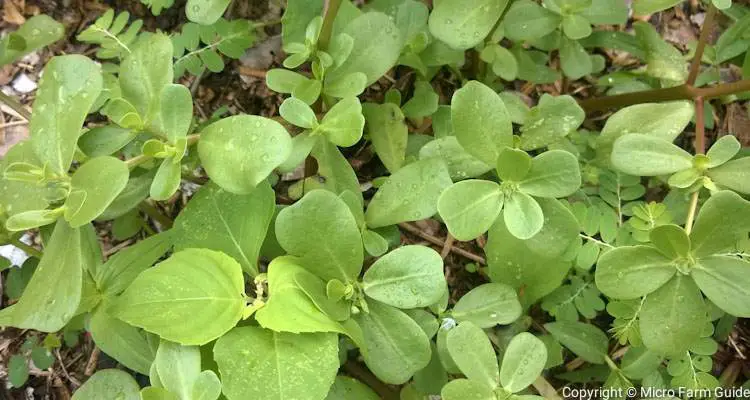
Before this research, I considered Purslane an unwanted weed. Now I am intrigued by this unique plant’s various uses and benefits.
Let’s explore some different varieties, multiple nutritional benefits, and traditional uses of the purslane plant came across in my research, as well as possible reasons to protect it.
How To Identify Purslane (With Images)
The plant, commonly called Purslane, is a member of the Portulacaceae family. Its scientific name is Portulaca Oleracea and is one of many Portulaca varieties.
Purslane is easy to identify by its succulent stems, large tender rounded green leaves, and tiny yellow flowers, which develop at clusters of leaves. It grows from one central reddish-green stem, with clear liquid when broken. It grows along the ground but can also grow upwards of 3 to 6 inches.
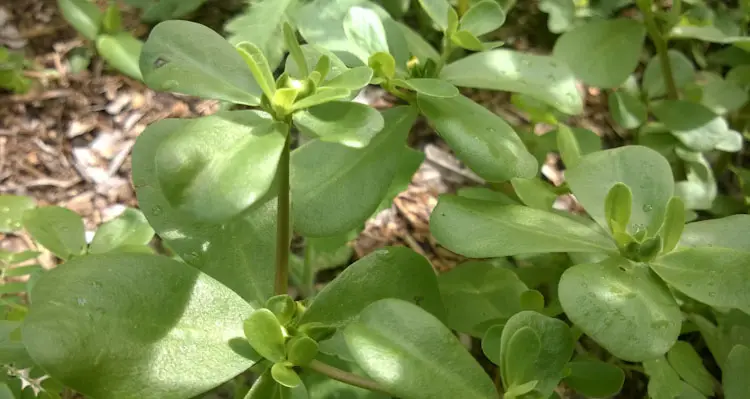
Purslane leaves are green, fleshy, rounded, and somewhat flat, but not paper thin like its non-edible lookalike Spurge. The size of the leaves vary and can grow up to two inches in suitable conditions.
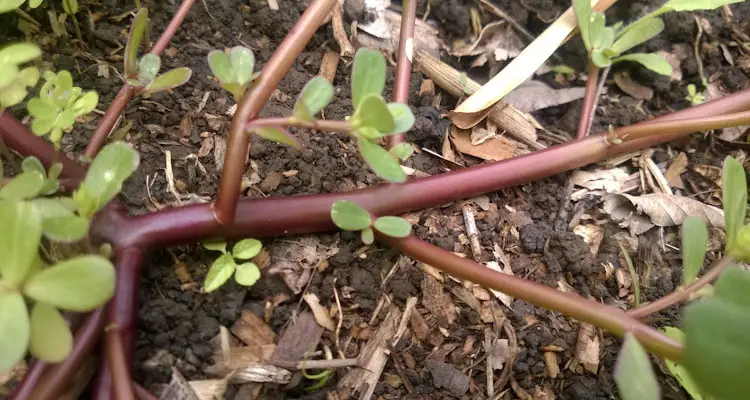
Purslane stems are succulent, rounded, and can grow pretty thick. They are tender, and colors can vary from green to red, with variations between them.
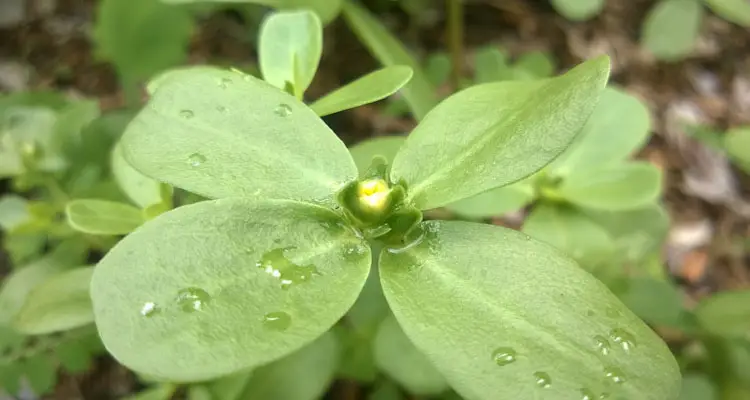
Common Purslane produces tiny yellow flowers, whose buds grow at the tips of the stems. The flower buds are usually surrounded by a cluster of leaves, forming a bit of a cradle for the flowers.
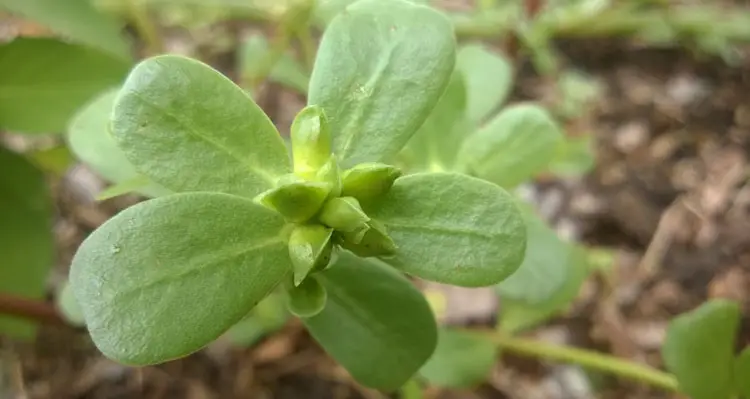
As the flower dies, it reveals multiple seed pouch, containing thousands of tiny seeds collectively.
Note: If you are still in doubt after looking at the external features above, break a small stem piece. You should see a clear liquid. If you see a milky white substance, chances are it is another plant called Spurge.
Are All Purslane Varieties Edible?
After learning about Purslane, I was still hesitant to try eating it since I was not 100% sure which variety I had or if all purslanes were edible.
Apparently, all varieties of Purslane are edible but not necessarily desirable due to the bitter taste of some used as ornamentals. The leaves, stems, flowers, and even seeds are edible but reported to contain high levels of oxalates and should be avoided by people with existing kidney issues.
To distinguish the tasty common Purslane from the ornamentals, many people often refer to them by their family name, Portulaca, or one of their nicknames. For example, “Jump Up And Kiss Me” is a local name for an assortment of ornamental purslanes, both needle leaf, and broadleaf varieties.
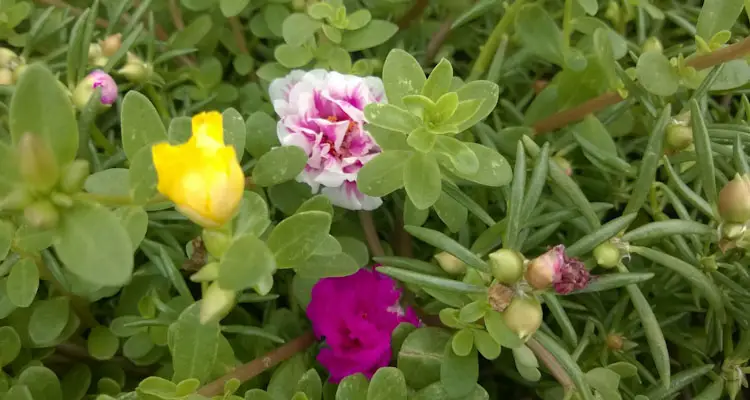
After learning that Purslane was safe to eat, I tasted a leaf and was surprised. I loved it! A friend of mine also shared one of her stir-fry recipes with me, which will allow me to use more of the plant.
However, there is one caution to bear in mind.
Purslane has a look-a-like called Spurge, which is poisonous to humans and animals. It contains a milky white substance that can irritate the skin and possibly cause blindness if it comes in contact with the eye.
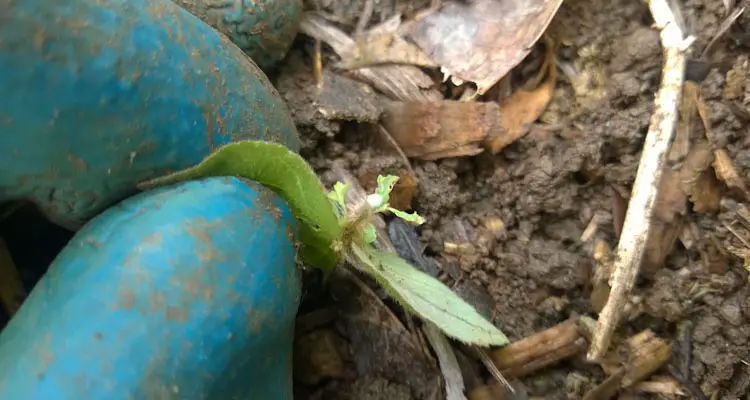
In short, Purslane makes a nutritious addition to means but should be consumed in moderation. However, be careful when foraging to ensure you choose the right plant.
What Are The Benefits Of Purslane?
Purslane has received mixed reviews based on the country, person, or culture. In some instances, it is considered a common weed, while in others a superfood.
Purslane is a good source of vitamins and minerals. It contains high levels of Omega-3 Fatty Acids and Antioxidants. It assists in overall heart health, regulating blood pressure, and lowering cholesterol. However, pregnant women should avoid it due to its effect on the uterine muscles.
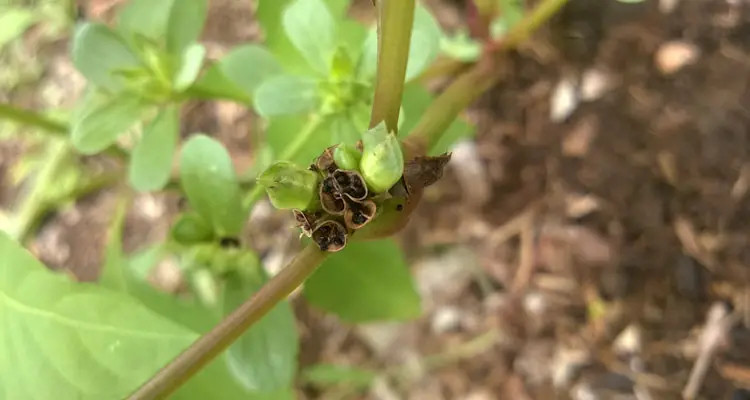
Reportedly, Purslane seed extracts contain compounds that show promise in treating liver cancer and abnormal uterine bleeding. Some studies hint at possible use to treat type 2 diabetes and side effects related to chemotherapy treatment.
Most of the health benefits of the Purslane Seeds Extract are at the clinical research level and not common knowledge to the average person.
However, we can still experience some of these benefits by adding Purslane to some of our favorite meals and side dishes.
How To Grow Purslane
Purslane is easy to grow both from seeds and cuttings. It requires moist soil and enough space where it is free to spread. Most people recommend full sunlight, but they seem to grow best in partial shade or dappled sunlight in my region, resulting in larger leaves and upright stems.
To grow Purslane from seed, scatter some seeds over a small area, then water them in. Do not cover since purslane seeds require light to germinate. If starting outside, ensure that the soil is at least 80°F. This is seldom an issue in the tropics. However, you may wish to wait until summertime to sow purslane seeds if you reside in temperate regions.
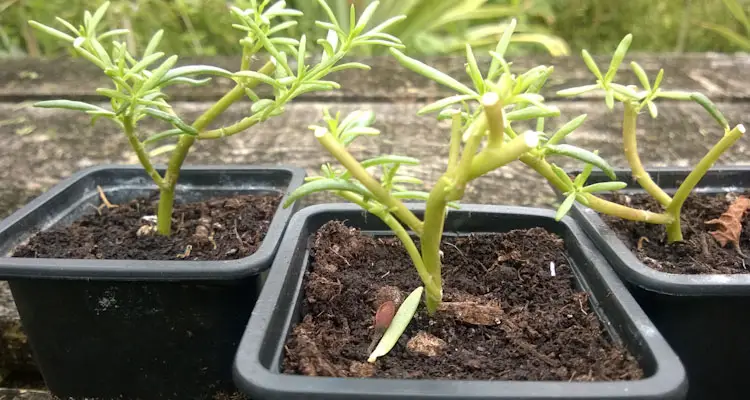
You can take cuttings from plants you purchase at a store or existing plants in the garden, cutting the stem into 3″ pieces. You can place this directly in the soil. However, I prefer to put it in a jar of water for about two days. Within that time, you will notice tiny root hairs. At this time, plant it into a pot or directly into the garden.
Purslane contains mainly water and requires an adequate supply to grow healthy. Apply water to the plants during dry spells or whenever the plant shows signs of distress.
Caution: Once established, the plant will self propagate, via seeds, spreading throughout the entire area. Which is great if you consume it but can be detrimental to other crops if not kept in check.
How To Get Rid Of Purslane
Purslane is undoubtedly a great plant to cultivate; however, it is considered invasive in many regions, competing with other crops, mainly for water.
Ideally, you may wish to prune when necessary and consume when possible. However, you may desire to remove it from an area at a certain point.
To get rid of Purslane, you will need to uproot and carefully discard the plant material. Then cover the area with mulch, blocking the seedling and seeds from a light source, removing any young seedling that manages to emerge. Herbicides are also effective but not recommended for use in the garden.
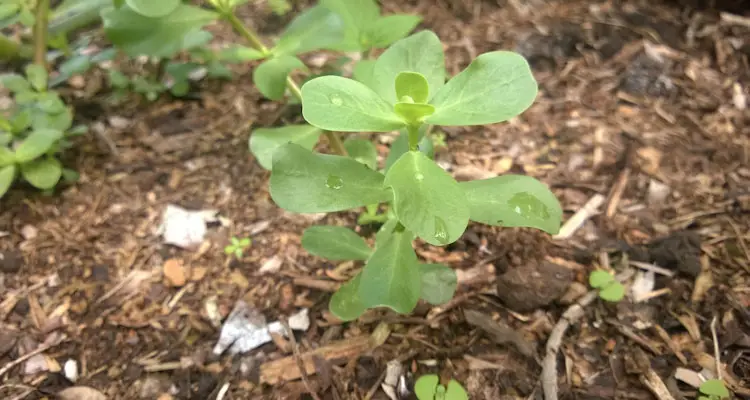
In the past, I routinely pulled Purslane and was almost successful at completely removing them from the garden. However, after realizing that they were edible and enjoyed by my chickens, I now remove only those that crowd my vegetable crops.
Final Thoughts
Purslane is a nutritious, succulent plant that most people often consider a weed.
It is easy to grow, and can be used as an alternative to other leafy greens in salads, soups, sauté, and other meals.
It is safe to consume and reported to contain compounds effective in treating many common chronic illnesses.
However, due to its oxalate levels and other effects on the uterine muscles, people with existing kidney issues and pregnant women are advised against consuming it.
Personally, after learning more about Purslane, I am now encouraged to cultivate it alongside my other crops and make the best use of this highly nutritious edible weed.
Related Questions
Are Purslane And Moss Rose The Same?
While both Purslane and Moss Rose belong to the Portulacaceae family, they are not the same plant. They differ significantly in the size and shape of leaves, flowers, and intended use. Moss Ross, Portulaca Grandiflora, is grown mainly as an ornamental, whereas Purslane Portulaca Oleracea is edible.
Does All Purslane Flower?
Purslanes are considered flowering plants with the size and type hinting at their intended use. Ornamental Purslane usually has smaller leaves by large flowers varying considerably in size, shape, and color. Whereas the flowers of the edible plant are typically tiny.
Are Purslane And Portulaca The Same?
Both Purslane and Portulaca are alternative names for plants in the same family. However, most people associate Purslane with Portulaca Oleracea, a common edible weed in most regions. Whereas Portulaca generally refers to various plants in the same family, grown primarily for ornamental purposes.
Can Animals Eat Purslane?
Purslane is safe for humans and most livestock, including ruminants and chickens. However, it contains soluble calcium oxalate, which according to the ASPCA, is toxic to cats, dogs, and horses, resulting in vomiting, coughing, and diarrhea.
References
Healthline. Purslane. healthline.com. Accessed February 2022
The Forage Foodie. Foraging: Identifying and Eating Purslane (avoid poisonous Spurge!). foragedfoodie.com. Accessed February 2022
Wildfoodism. Who Knew? Purslane Seeds Are Loaded With Health Benefits … Here Are 5 Of Them. wildfoodism.com. Accessed March 2022
Department Of Agriculture And Rural Development. Purslane: a weed with a potential for human consumption and animal feed. [PDF]. Accessed March 2022
